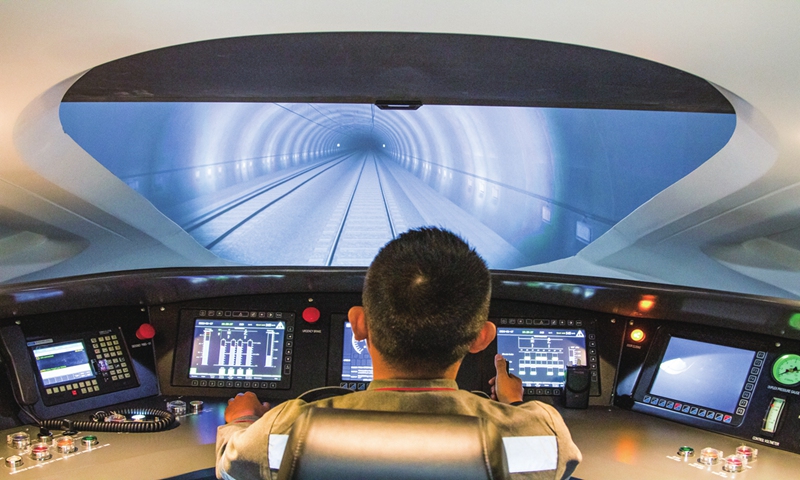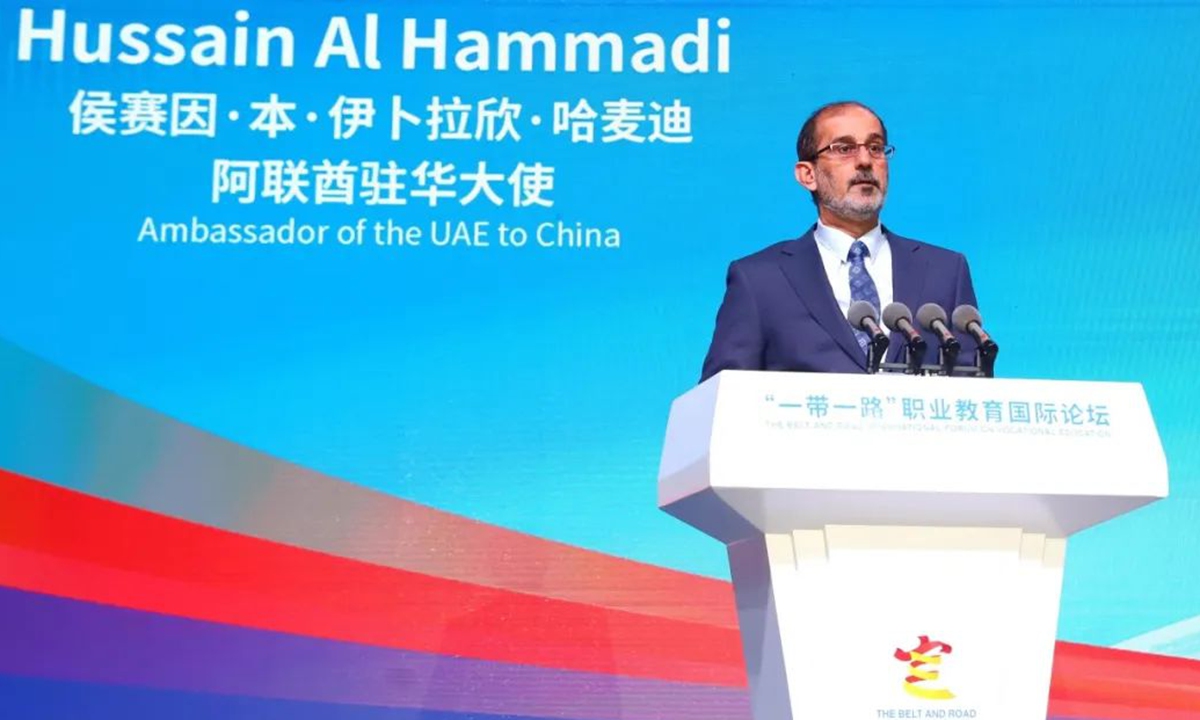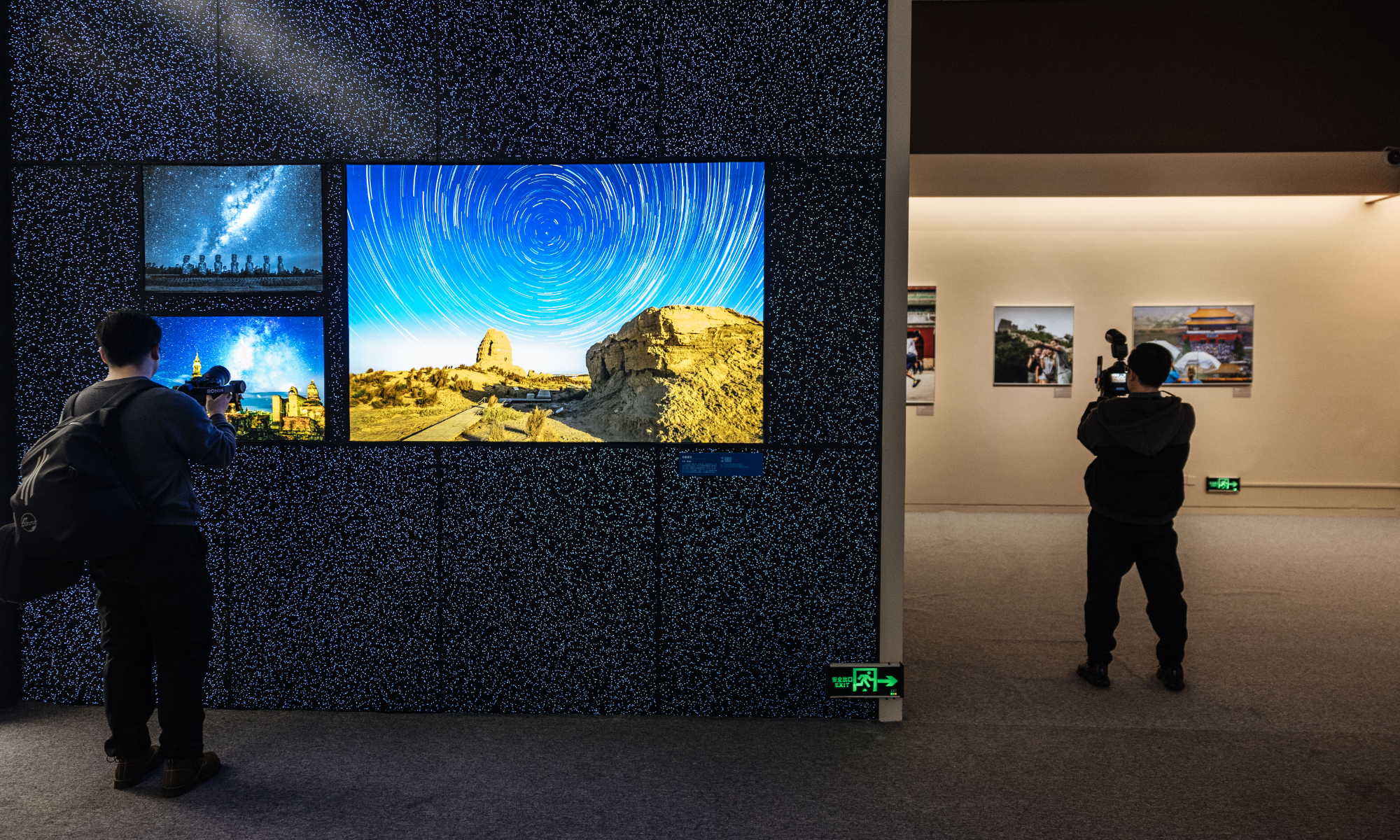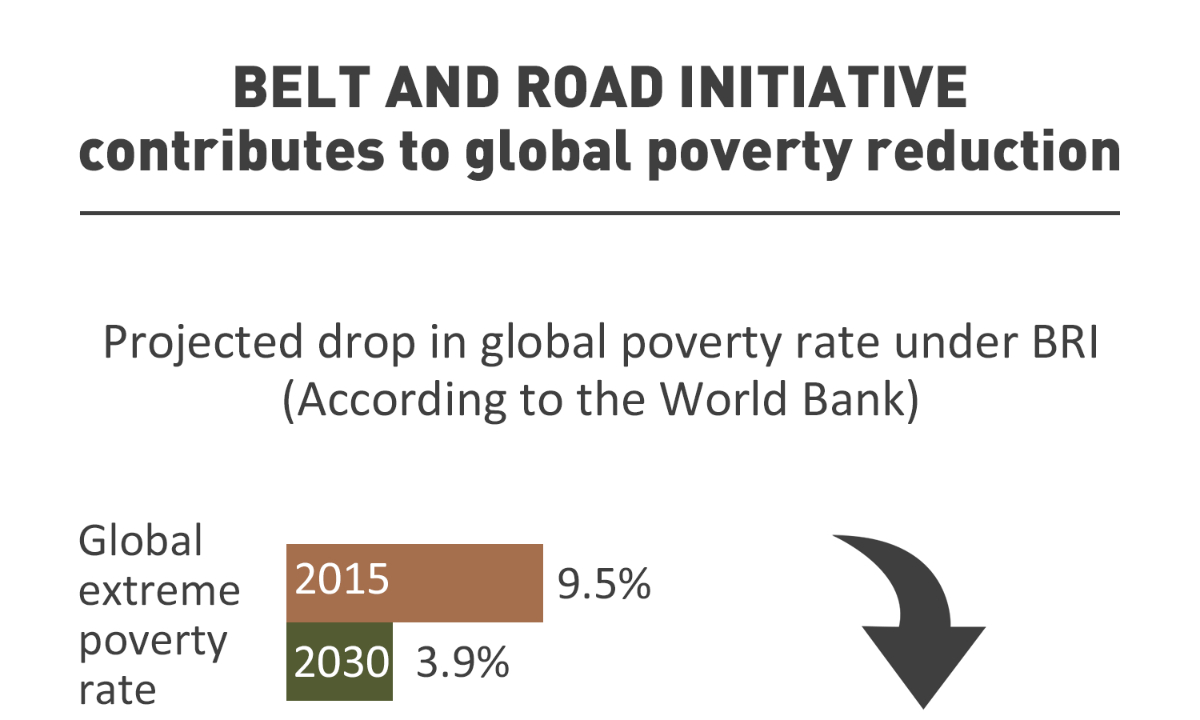China will continue to assist Asia-Pacific countries to rapidly develop their economies under BRI framework: experts

An electric multiple unit (EMU) machinist trainee tries the high-speed train simulator at Tegalluar High Speed Train Depot of the Jakarta-Bandung High-Speed Railway in Bandung, Indonesia, on January 17, 2024. Photo: VCG
Chinese Foreign Minister Wang Yi recently concluded his successful visit to three Asia-Pacific countries, displaying China's willingness to strengthen cooperation with the region. As good friends and economic partners based on mutual respect, equality, and mutual benefit, China's relations with regional countries are evolving and constantly reaching new heights.One important focus of Wang's trip was the high-quality construction of the Belt and Road Initiative (BRI). China's cooperation with Indonesia, Cambodia, and Papua New Guinea under the BRI platform has yielded fruitful results.
In Indonesia, the Jakarta-Bandung High-Speed Railway has become the first high-speed railroad in Southeast Asia, delivering tangible benefits to local development and improving livelihoods of many Indonesians.
In Cambodia, highways constructed with Chinese aid and industrial parks built by Chinese companies have become important drivers of local economic development.
As the first Pacific island country to sign a memorandum of understanding and cooperation with China under the BRI, Papua New Guinea has become China's largest trading partner, investment destination, and engineering contracting market in Pacific island countries.
Unlike the US' past efforts in the Asia-Pacific region, often attached with political strings and hardly bearing any substantive results, China's cooperation and assistance to the countries in the region are based on principles of mutual respect, equality, and win-win, without imposition of any political conditions, experts said.
As the BRI celebrated its 10th anniversary last year, embarking on a new journey of high-quality development, experts said that China's cooperation with Asia-Pacific countries will continue to focus on helping regional countries achieve sustainable development and improve locals' livelihood. This includes enhancing cooperation in emerging areas such as green development and digitalization.
Friends and partners
During Chinese Foreign Minister Wang's recent visit, important exchange meetings with regional countries were held, including the Fourth Meeting of the China-Indonesia High-level Dialogue Cooperation Mechanism co-chaired by Wang and Luhut Binsar Pandjaitan, Indonesia's coordinator for cooperation with China and coordinating minister of maritime affairs and investment, as well as the Seventh Meeting of the China-Cambodia Intergovernmental Coordination Committee, co-chaired by Wang and Cambodian Deputy Prime Minister Sun Chanthol.
High-level interactions provided clearer direction for future cooperation under the BRI between China and the three countries.
Chinese Foreign Ministry spokesperson Lin Jian, while describing Wang's visits, used a common description when referring to the three countries as "good friends and good partners" based on the principles of mutual respect, equality, mutual benefit and shared development.
That characterization is fair and fitting, given the well-known friendly relations between these three countries and China, experts said, noting that the joint construction of the BRI serves as an accelerator for the continuous growth and enhancement of friendly cooperation between China and the regional countries.
The tangible results under the joint initiative are evident for all to see.
Last week, the Jakarta-Bandung High-Speed Railway marked its sixth month of operation with a total of 2.56 million passengers being transported. Since its official operation around mid-October, the railway has operated a total of 7,050 rides with a mileage of over 1.26 million kilometers, Xinhua News Agency reported, citing data provided by PT Kereta Cepat Indonesia-China, a joint venture consortium between Indonesian and Chinese state-owned firms that constructs and runs the HSR.
In the Sihanoukville Special Economic Zone, a landmark project under the BRI in southwestern Cambodia, changes have taken place with the participation of Chinese companies. Over the past decade, the economic zone, a joint venture between Chinese and Cambodian companies, has drawn more than 175 companies from countries including China, Europe, the US, Southeast Asia and other regions to settle there, creating more than 30,000 local jobs.
Papua New Guinea, the largest Pacific Island country, was the first country to sign a memorandum of understanding and cooperation plan in the region for jointly building the BRI.
The Juncao and Upland Rice Project has been implemented in Papua New Guinea for over 20 years, benefiting more than 40,000 local people. The country's Prime Minister James Marape referred to Juncao technology as a "gift from China to the world," with Juncao now known locally as the "grass of happiness" and "grass of prosperity."
China and Papua New Guinea are engaging in negotiations to reach a free trade agreement, and the talks are expected to be completed by June, Chen Hong, director of the Australian Studies Center of East China Normal University, told the Global Times on Thursday.
Chen noted that this illustrates that China's cooperation with Asia-Pacific countries is genuinely based on mutual benefit, using strong economic ties to drive overall cooperation and improve local economies and living standards.
China's foreign minister's trip to the Asia-Pacific is of landmark significance as the current relations between China and the regional countries have continued to improve and have reached a very important moment, Zhao Gancheng, a research fellow from the Shanghai Institute for International Studies, told the Global Times on Thursday.
Against the background of a volatile international landscape, China continues to adhere to multilateralism and inclusive growth in the region, despite the protectionism and egoism of the US, Zhao said.
China's cooperation with the countries differs significantly from that of the US-led West, which often prioritizes its own strategic objectives before local interests, Chen said.
Stark contrast
While the US pledges in the Asia-Pacific often fails to materialize, resulting in empty promises and broad disappointment, China's cooperation under the BRI in the region is in stark contrast - Chinese involvement directly improves education, healthcare, employment and more in the region, Chen said.
During Wang's visit in Indonesia, he referenced public expectations to expand bilateral cooperation in three key directions - digital economy, green development, and improvement of people's livelihood, under the framework of the BRI.
As the BRI is entering a new phase of high-quality development, new opportunities in green economy and digital economy are emerging as countries pursue sustainable development. The extent of Belt and Road cooperation in Asia-Pacific will undoubtedly be expanded to include new frontiers like clean renewable energies and electric vehicles and more, which also signify new quality productive forces in the coming wave of high-quality development, Chen said.
What needs to be tackled next, according to Zhao, is to complete cooperation projects that were disrupted by the COVID-19 pandemic. At the same time, China's cooperation with regional countries will always be kept as open and transparent and lead to more tangible results for local residents.
"Infrastructure development have been and will continue to be an important part of the BRI cooperation in building quality roads, bridges, railways and other crucial infrastructure," Zhao said. The economic partnership will only get closer and stronger, he added.



